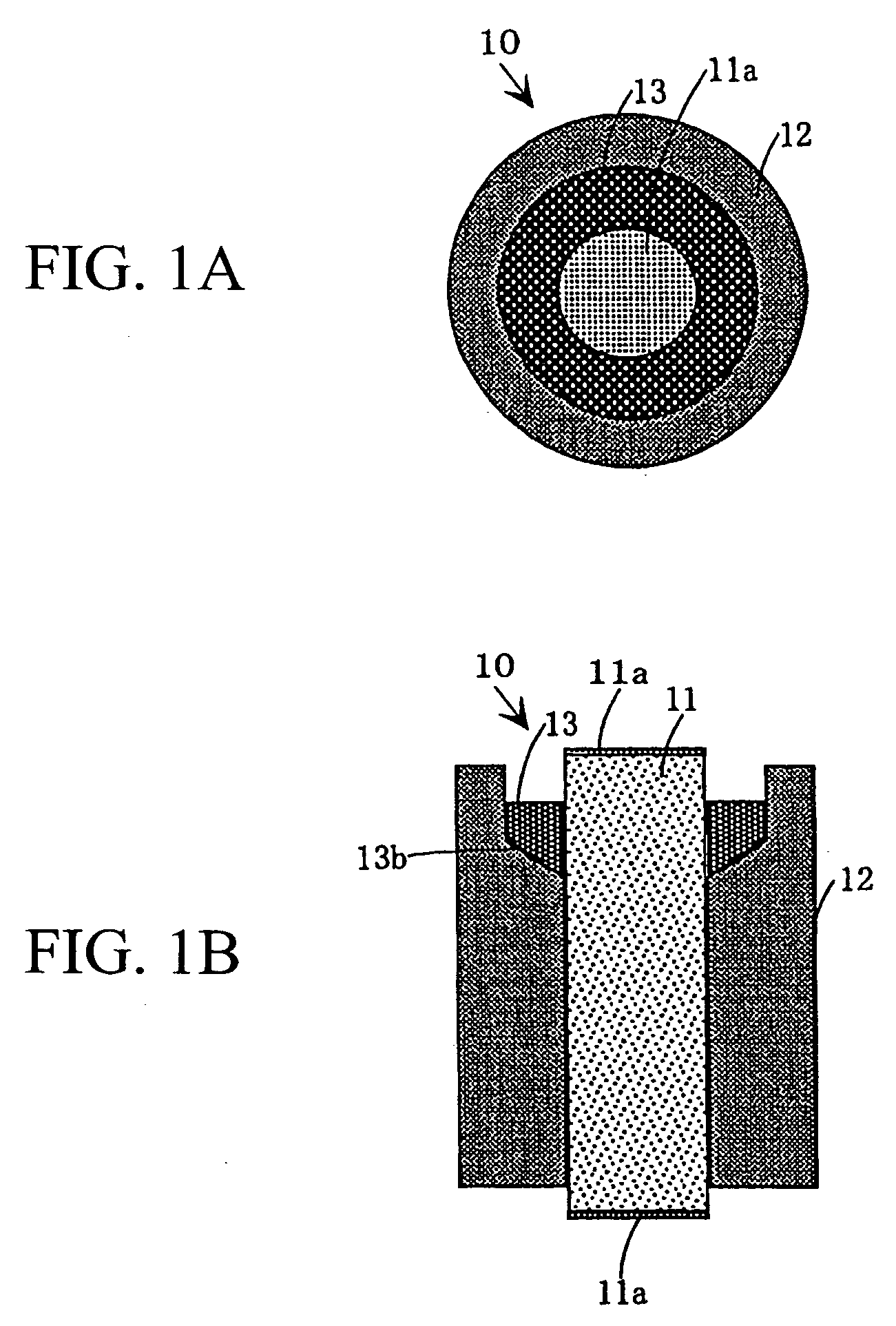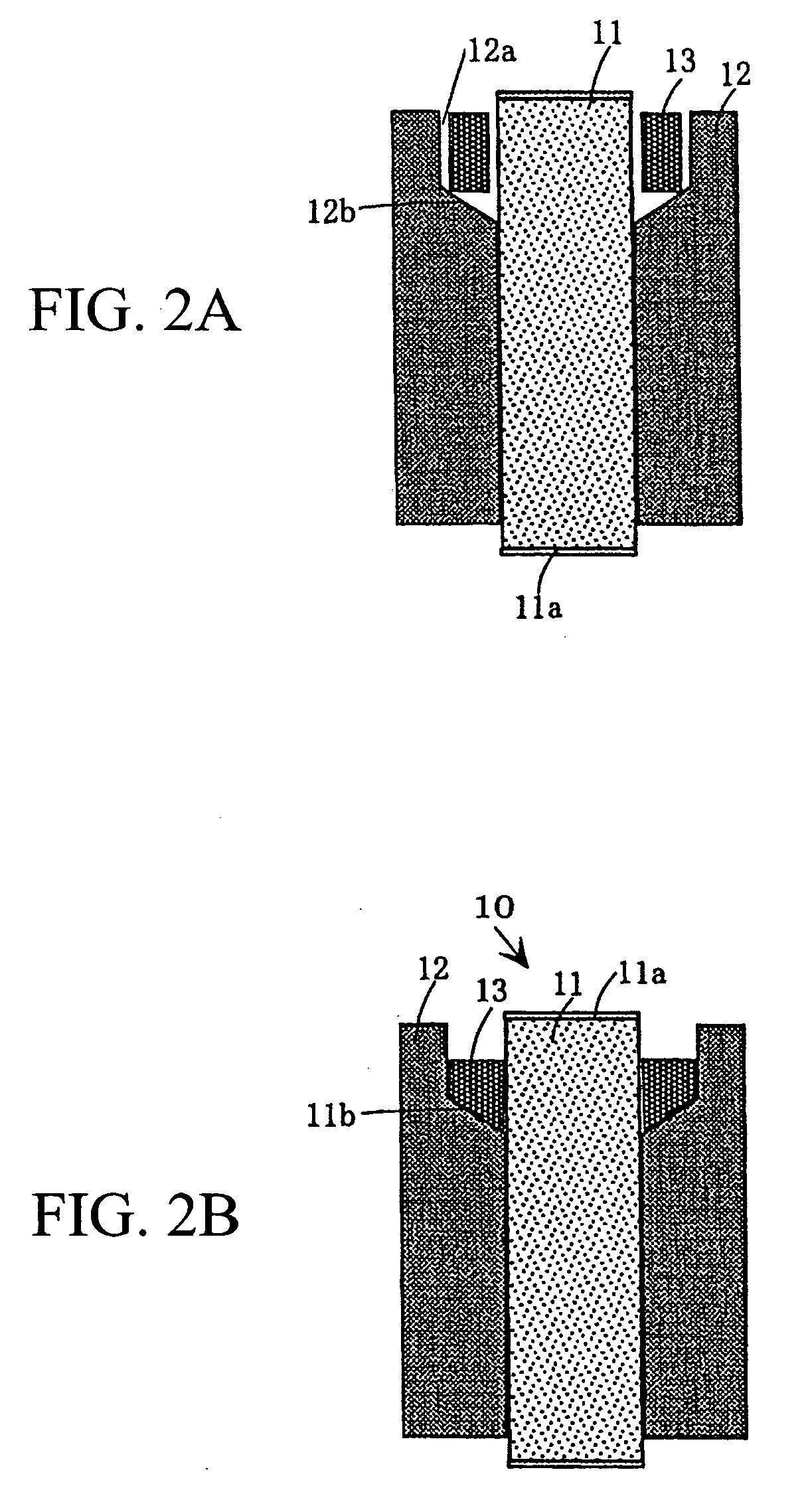Optical component using optical transmission element joining metal holder
- Summary
- Abstract
- Description
- Claims
- Application Information
AI Technical Summary
Benefits of technology
Problems solved by technology
Method used
Image
Examples
Embodiment Construction
[0038] This invention will be described in further detail by way of examples with reference to the accompanying drawings.
[0039] An optical component in which an optical transmission element, i.e., an optical lens, joins a metal holder will be described with reference to FIGS. 1A, 1B, 2A, and 2B. FIGS. 1A and 1B diagrammatically show an optical component 10 in which an optical lens 11 joins a metal holder 12, wherein FIG. 1A is an upper view of the optical component 10; and FIG. 1B is a cross-sectional view showing the internal structure of the optical component 10 being cut at a plane vertically passing through the center of the illustration of FIG. 1A. FIGS. 2A and 2B show the manner in which the optical lens 11 joins the metal holder 12, wherein FIG. 2A is a cross-sectional view of the optical device 10 before the optical lens 11 completely joins the metal holder 12; and FIG. 2B is a cross-sectional view of the optical device 10 after the optical lens 11 completely joins the meta...
PUM
 Login to View More
Login to View More Abstract
Description
Claims
Application Information
 Login to View More
Login to View More - R&D
- Intellectual Property
- Life Sciences
- Materials
- Tech Scout
- Unparalleled Data Quality
- Higher Quality Content
- 60% Fewer Hallucinations
Browse by: Latest US Patents, China's latest patents, Technical Efficacy Thesaurus, Application Domain, Technology Topic, Popular Technical Reports.
© 2025 PatSnap. All rights reserved.Legal|Privacy policy|Modern Slavery Act Transparency Statement|Sitemap|About US| Contact US: help@patsnap.com



